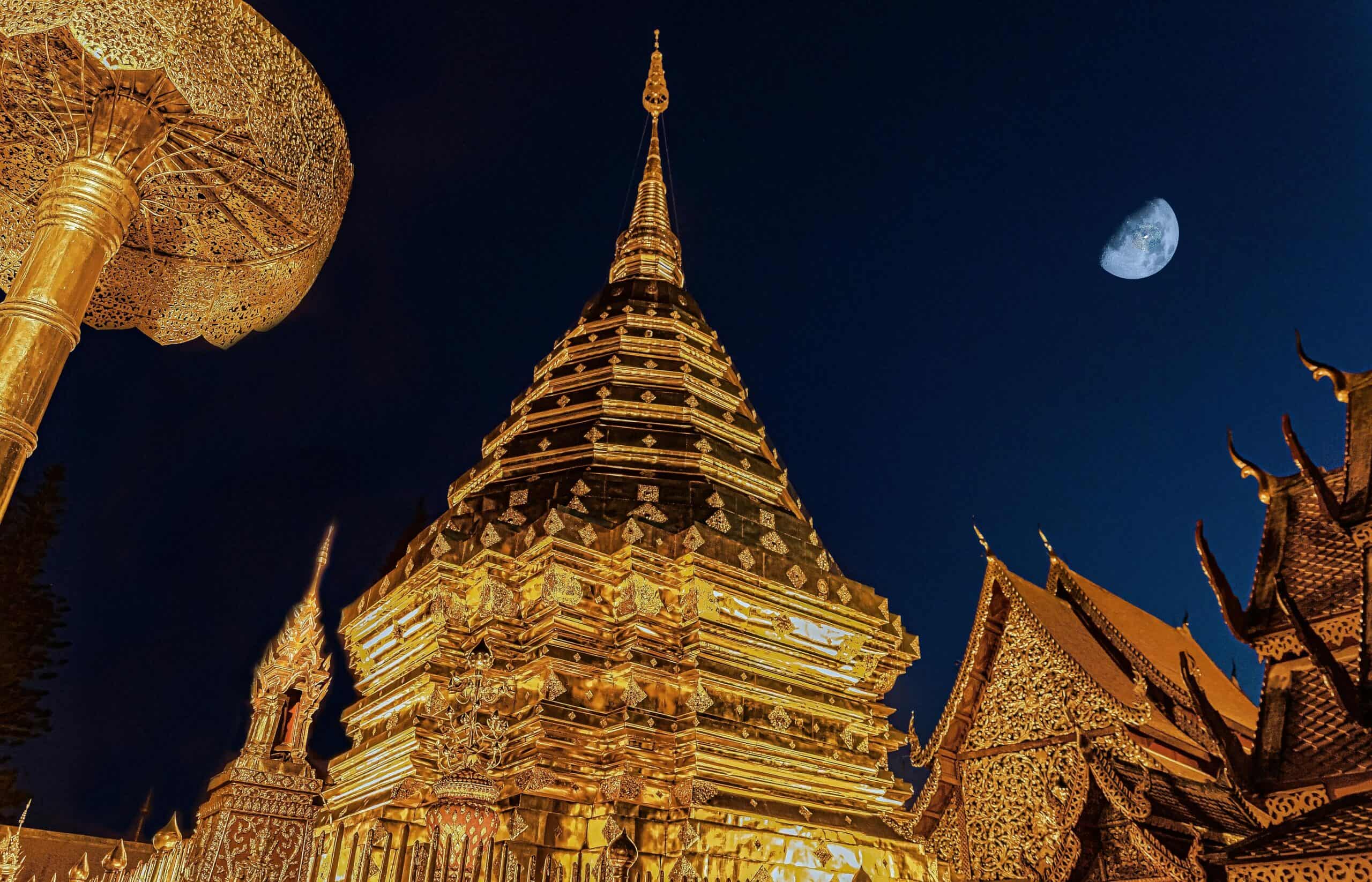Nestled in the lush mountains of Chiang Mai, Thailand, Wat Phra That Doi Suthep is not just a temple – it’s a sacred site that holds immense significance for Buddhists and a beloved destination for tourists.
This stunning temple, perched high above the city, offers breathtaking panoramic views that captivate visitors from around the globe. Its intricate architecture, adorned with gold and vibrant colors, reflects the rich cultural heritage of the region, making it a must-visit for anyone traveling to Northern Thailand.

History
The origins of Wat Phra That Doi Suthep are steeped in legend. According to local lore, a monk from the Sukhothai Kingdom discovered a relic of the Buddha, sparking the establishment of the temple.
The story takes a fascinating turn with the involvement of a white elephant, which played a pivotal role in the temple’s founding.
After carrying the relic to the mountain, this elephant trumpeted three times before it died, signaling the perfect location for the temple.
Built in the 14th century during the Lanna Kingdom era, this temple stands as a testament to the region’s rich history and spiritual significance.
Cultural and Religious Significance
This temple serves as a major pilgrimage site for Buddhists, attracting over 120,000 visitors each month. It’s not just a place of worship, but also a hub of local traditions and community life.
It plays a vital role in the spiritual landscape of Chiang Mai, embodying the beliefs and practices of the local population.

Ties to Buddhism
The architectural features of Wat Phra That Doi Suthep are nothing short of spectacular. The gilded chedi, a prominent structure within the temple complex, gleams in the sunlight, symbolizing the enlightenment of the Buddha.
Visitors are greeted by the majestic Naga staircase, which leads them up to the temple, embodying the journey of spiritual ascent. As a center for Theravada Buddhism, the temple is integral to local rituals and festivals, providing a serene space for meditation and spiritual retreats.
Pilgrimage and Festivals
The temple is alive with activity during significant Buddhist festivals, such as Visakha Bucha Day, which commemorates the birth, enlightenment, and death of the Buddha.
Pilgrims and tourists alike partake in rituals, offering prayers and lighting candles, creating a vibrant atmosphere filled with devotion and reverence.
Ties to Taoism
Wat Phra That Doi Suthep is also a fascinating example of cultural syncretism, where Taoist beliefs and practices have intertwined with Buddhism.
This coexistence reflects the shared values of harmony with nature and the pursuit of enlightenment that both traditions espouse.
Visitors may notice Taoist symbols and practices interwoven with Buddhist rituals, showcasing the rich tapestry of spiritual life in Thailand.

Connections to Chinese History and Culture
Chinese influence is evident in the temple’s customs and rituals, stemming from the historical migration of Chinese communities to Thailand.
The architectural design and artistic elements of the temple also bear the marks of Chinese influence, adding to its unique character.
The temple features several Chinese architectural elements, such as dragon motifs and intricate carvings, reflecting the artistic exchange between the two cultures.
Additionally, Chinese New Year and other festivals are celebrated at the temple, drawing Chinese and Thai communities together in joyous festivities.
Conclusion
Wat Phra That Doi Suthep is more than just a temple—it’s a testament to the rich tapestry of religious and cultural influences that have shaped Northern Thailand. From its legendary origins to its modern-day significance, the temple offers a profound spiritual experience for visitors and pilgrims alike.
Whether you’re seeking enlightenment, cultural enrichment, or simply a breathtaking view, Wat Phra That Doi Suthep is a destination that should not be missed.
Share your experiences or thoughts about Wat Phra That Doi Suthep. Whether you’ve visited the temple or are planning to, your insights can contribute to a deeper understanding of this sacred site.




